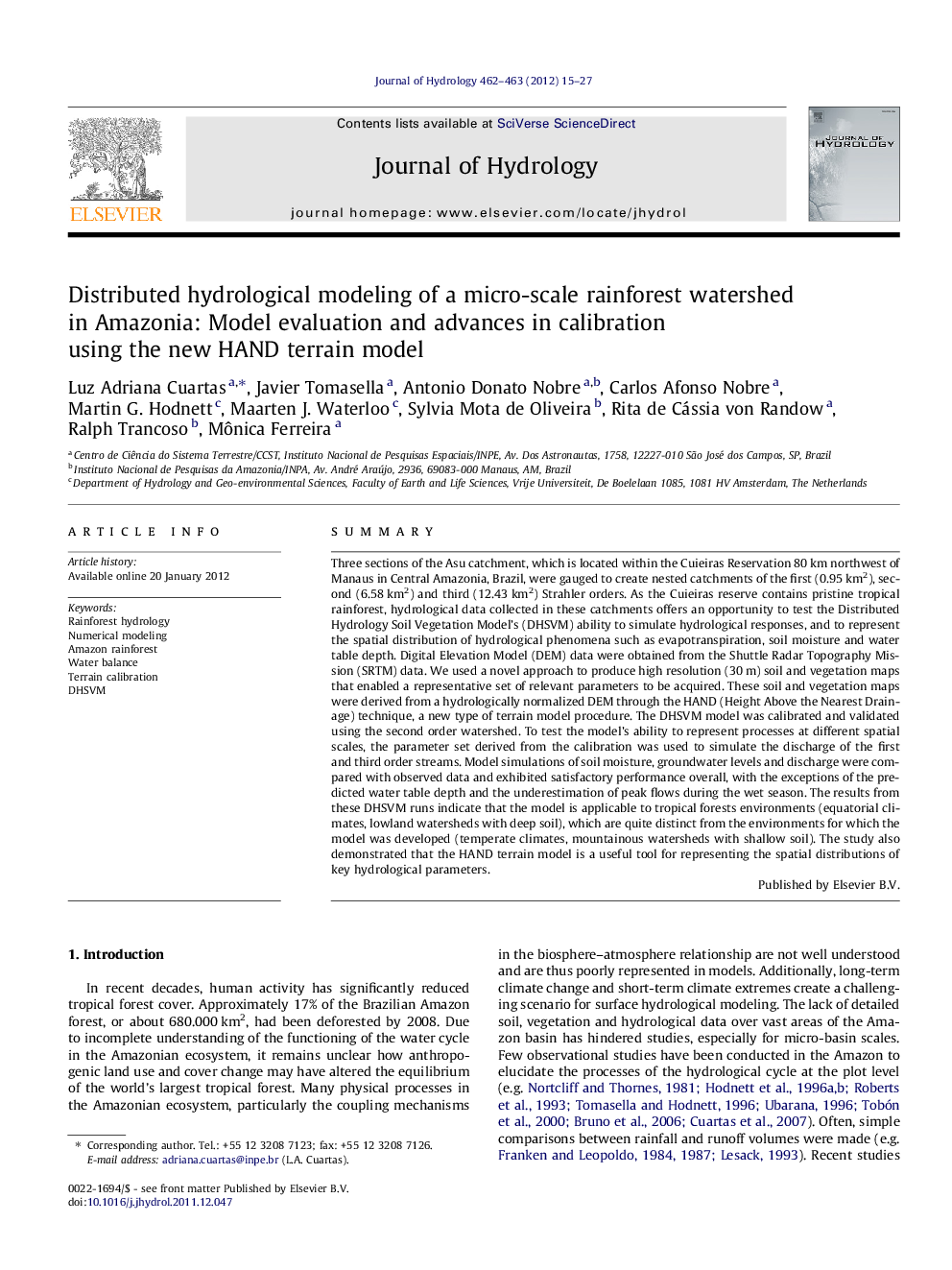| کد مقاله | کد نشریه | سال انتشار | مقاله انگلیسی | نسخه تمام متن |
|---|---|---|---|---|
| 4576804 | 1629980 | 2012 | 13 صفحه PDF | دانلود رایگان |

SummaryThree sections of the Asu catchment, which is located within the Cuieiras Reservation 80 km northwest of Manaus in Central Amazonia, Brazil, were gauged to create nested catchments of the first (0.95 km2), second (6.58 km2) and third (12.43 km2) Strahler orders. As the Cuieiras reserve contains pristine tropical rainforest, hydrological data collected in these catchments offers an opportunity to test the Distributed Hydrology Soil Vegetation Model’s (DHSVM) ability to simulate hydrological responses, and to represent the spatial distribution of hydrological phenomena such as evapotranspiration, soil moisture and water table depth. Digital Elevation Model (DEM) data were obtained from the Shuttle Radar Topography Mission (SRTM) data. We used a novel approach to produce high resolution (30 m) soil and vegetation maps that enabled a representative set of relevant parameters to be acquired. These soil and vegetation maps were derived from a hydrologically normalized DEM through the HAND (Height Above the Nearest Drainage) technique, a new type of terrain model procedure. The DHSVM model was calibrated and validated using the second order watershed. To test the model’s ability to represent processes at different spatial scales, the parameter set derived from the calibration was used to simulate the discharge of the first and third order streams. Model simulations of soil moisture, groundwater levels and discharge were compared with observed data and exhibited satisfactory performance overall, with the exceptions of the predicted water table depth and the underestimation of peak flows during the wet season. The results from these DHSVM runs indicate that the model is applicable to tropical forests environments (equatorial climates, lowland watersheds with deep soil), which are quite distinct from the environments for which the model was developed (temperate climates, mountainous watersheds with shallow soil). The study also demonstrated that the HAND terrain model is a useful tool for representing the spatial distributions of key hydrological parameters.
Figure optionsDownload as PowerPoint slideHighlights
► DHSVM model evaluation for three nested basins in Central Amazonia.
► Tropical rainforest catchment with deep soil successfully modeled by DHSVM.
► High-resolution soil and vegetation maps obtained from SRTM-derived HAND model.
► HAND model useful in deriving spatial distributions of hydrological parameters.
► Remotely acquired parameter layers open promises for modeling of ungauged basins.
Journal: Journal of Hydrology - Volumes 462–463, 10 September 2012, Pages 15–27